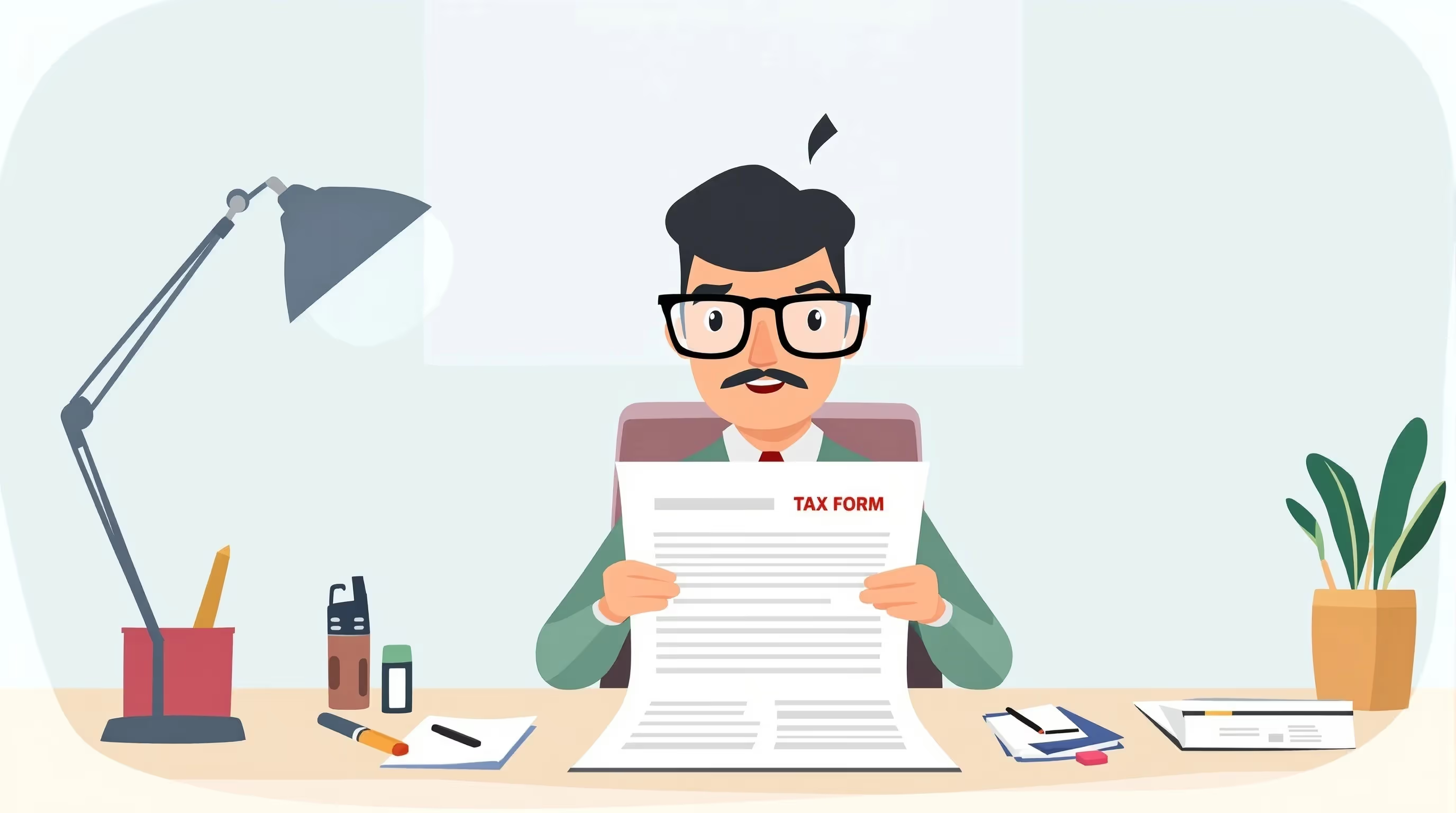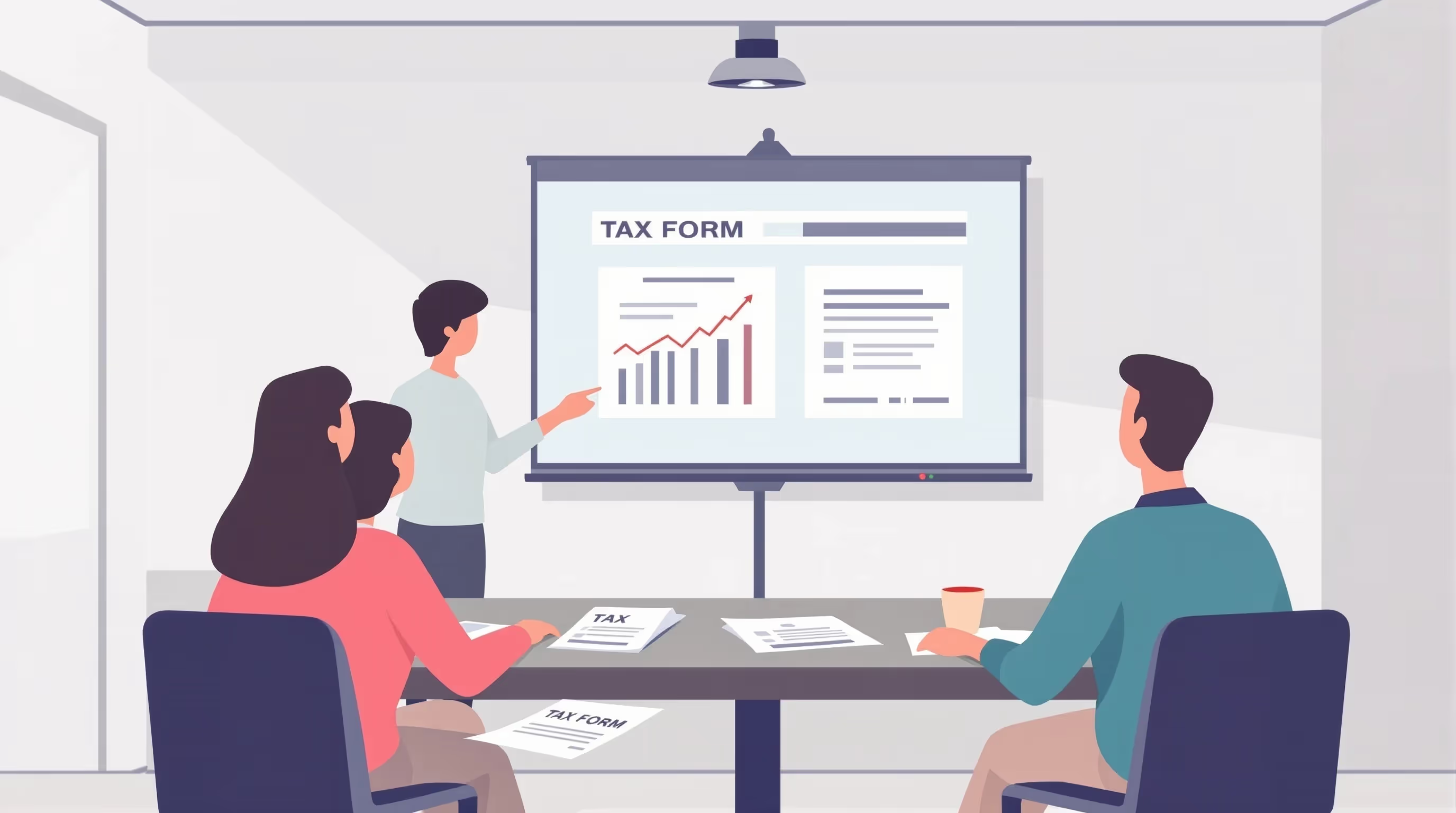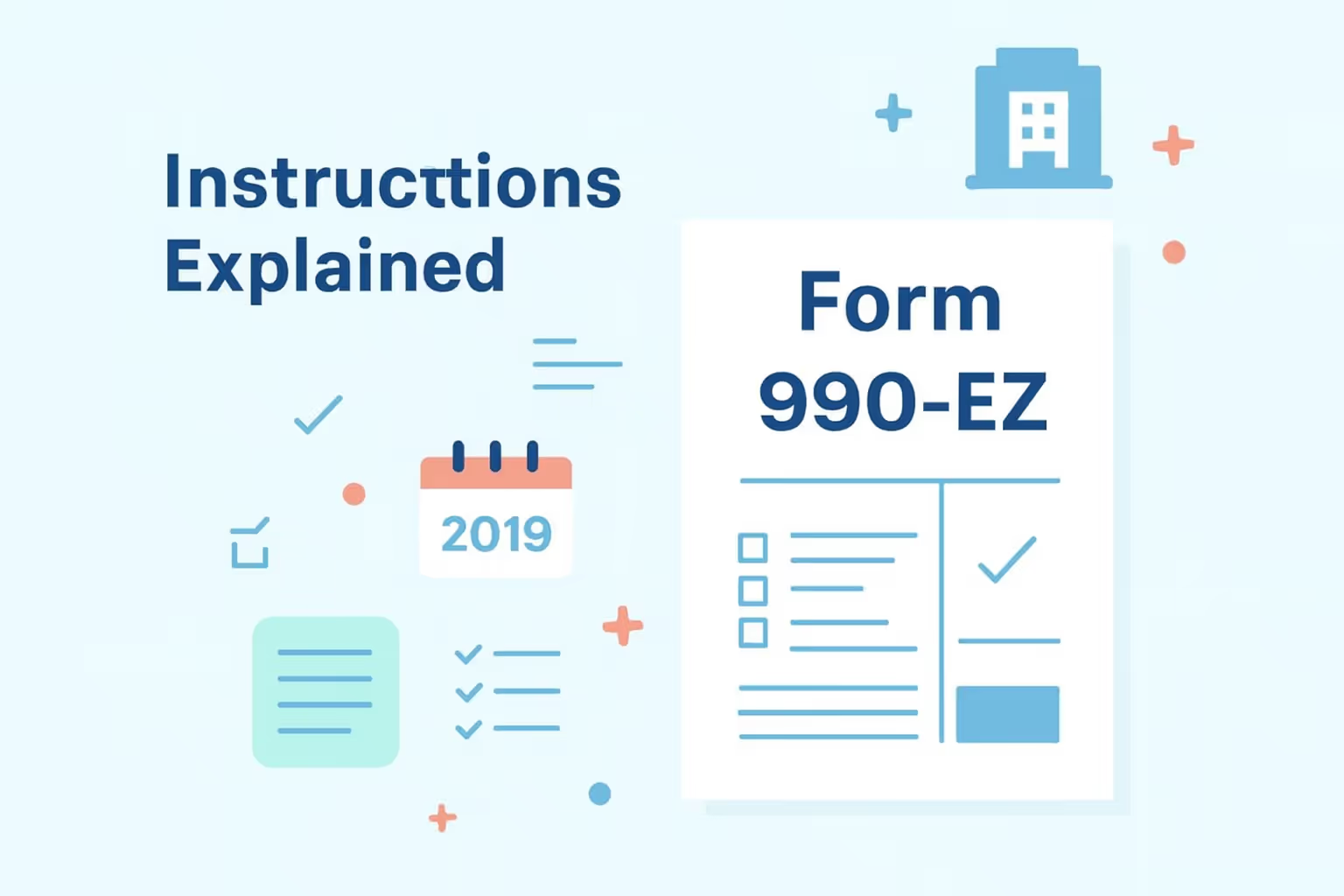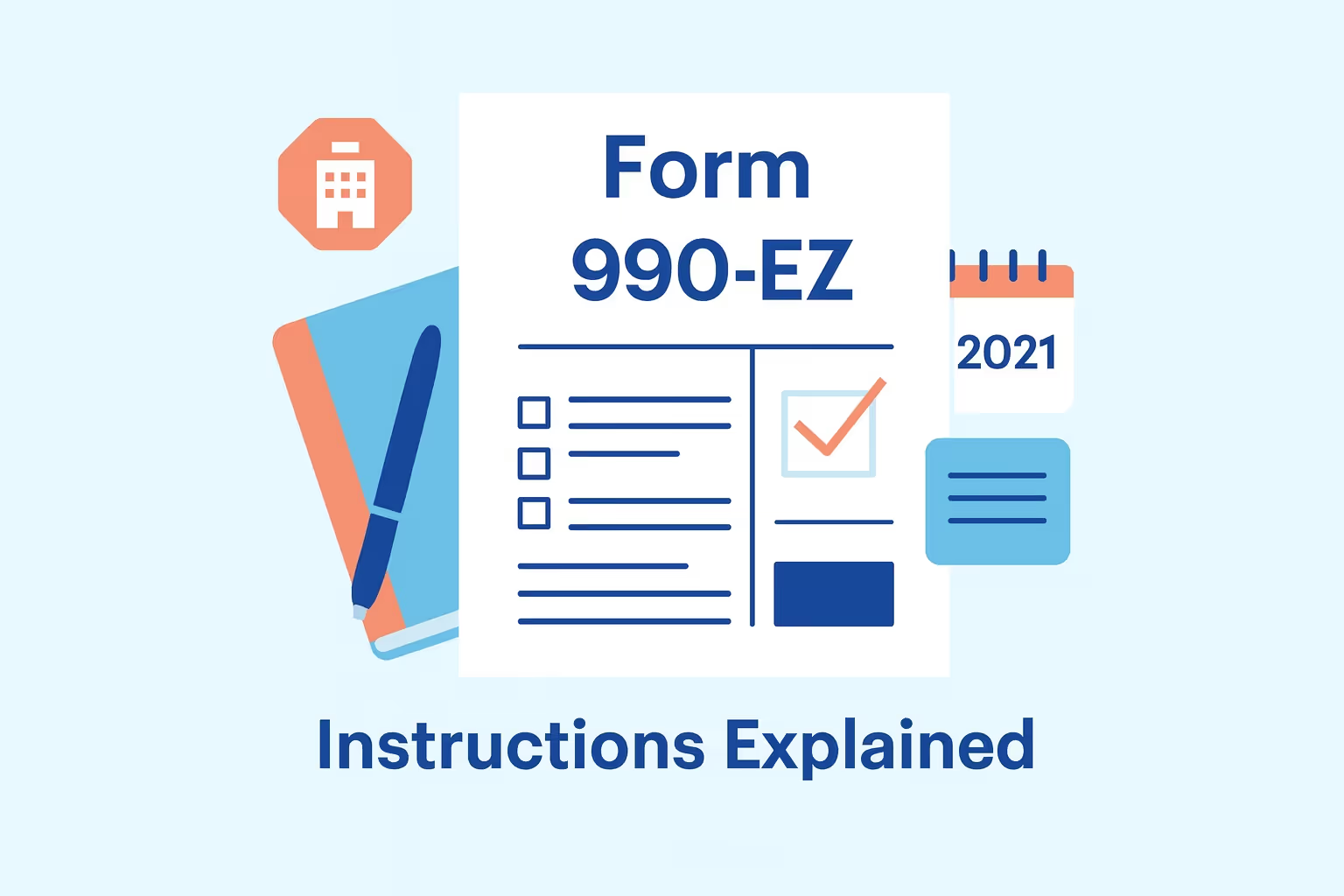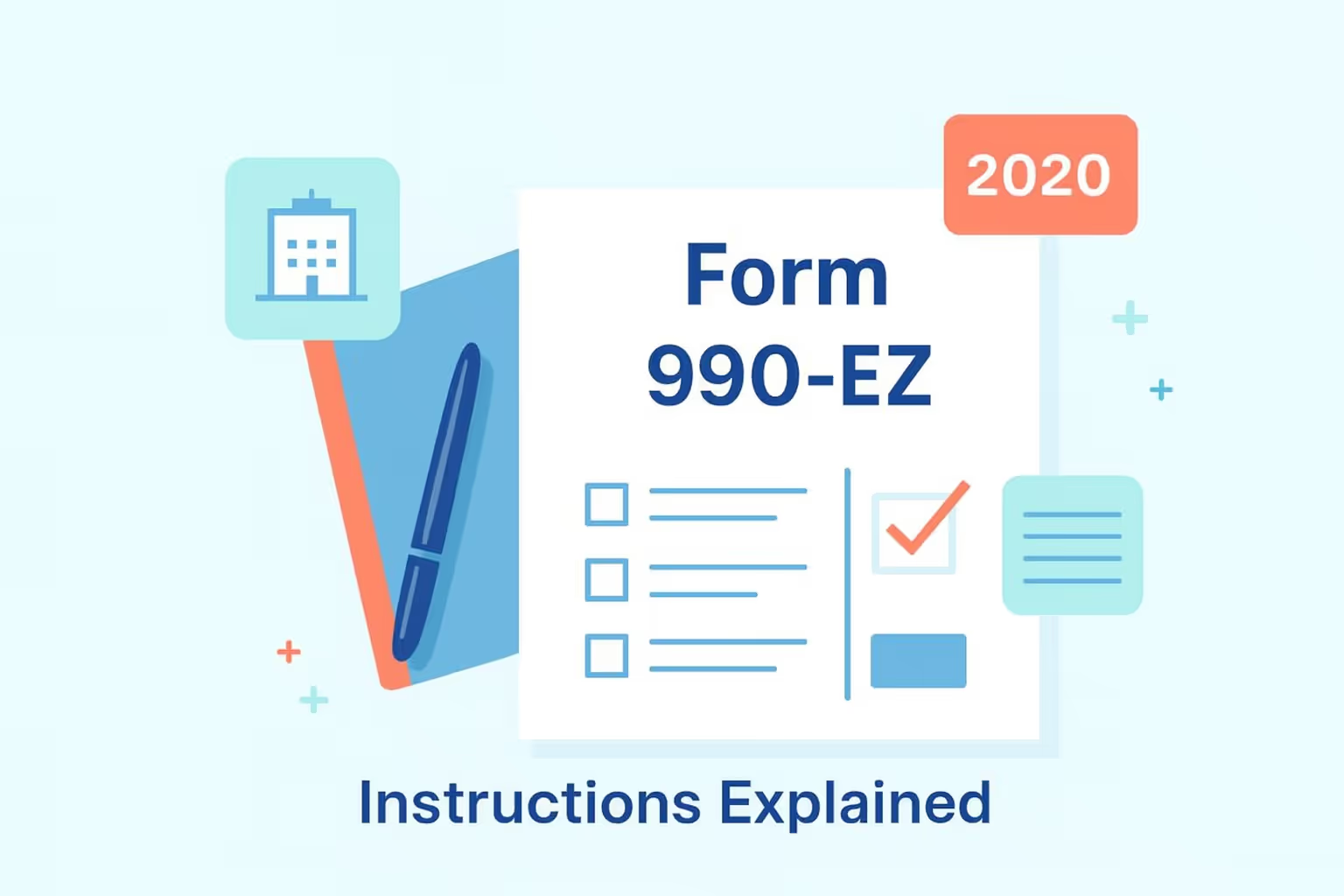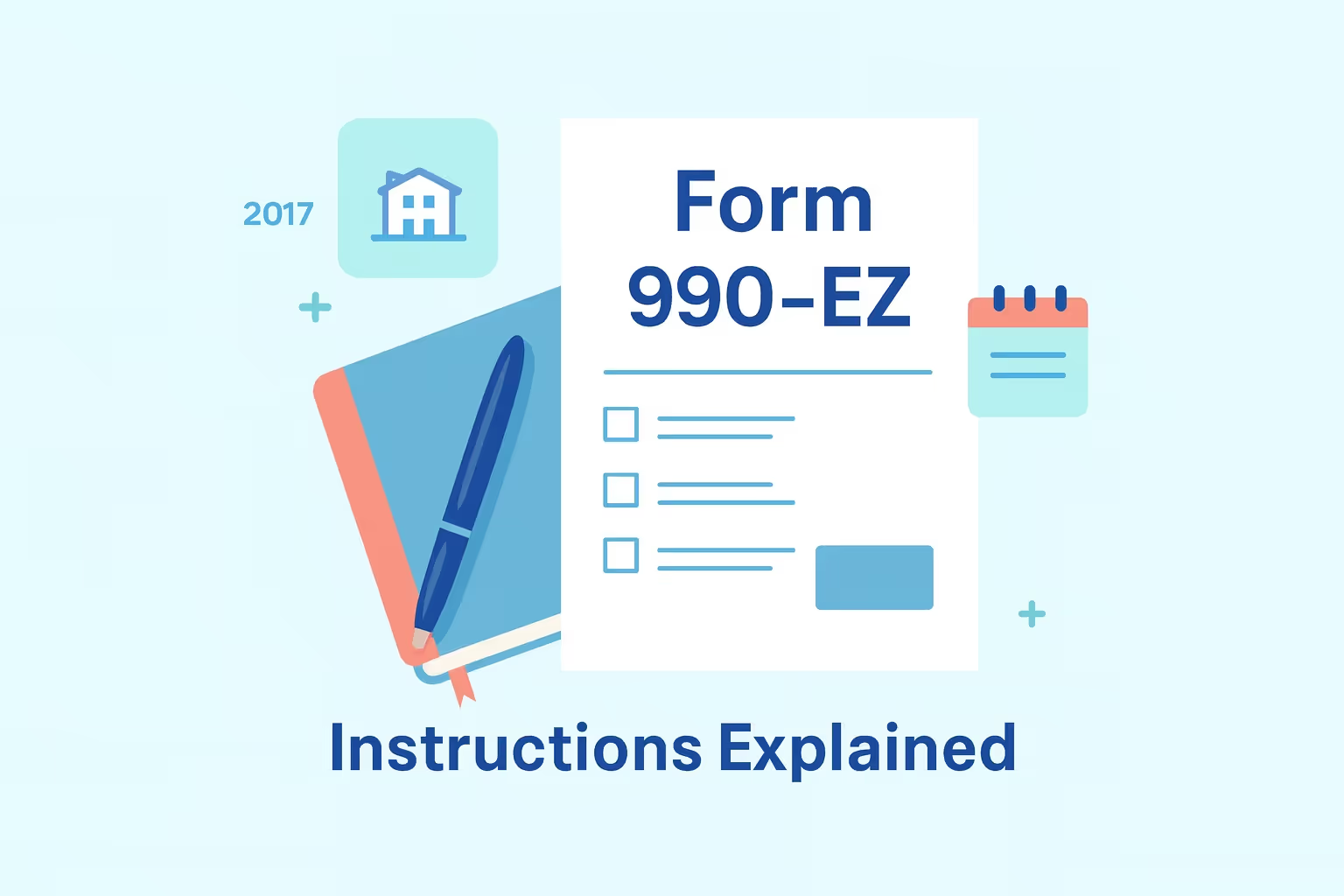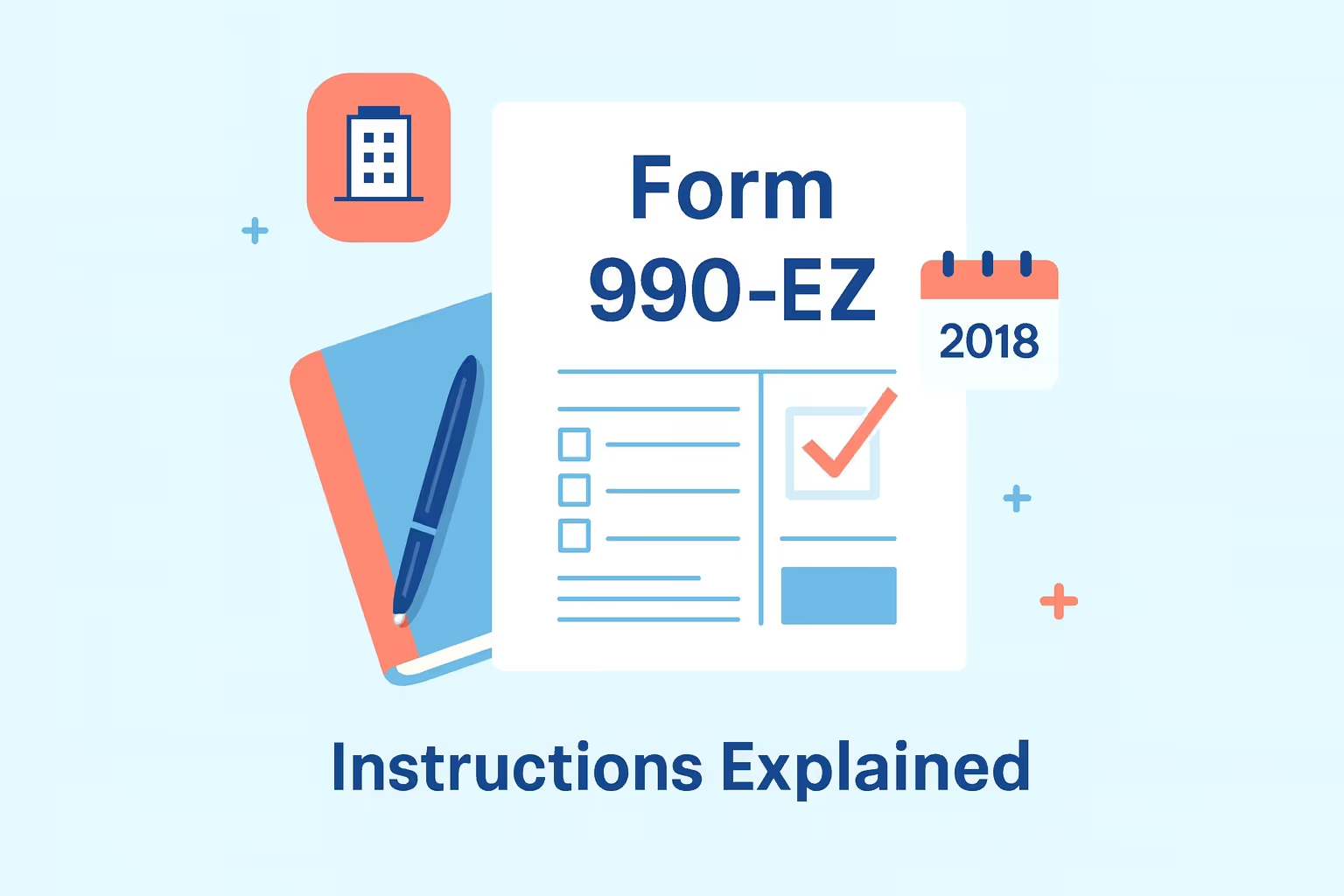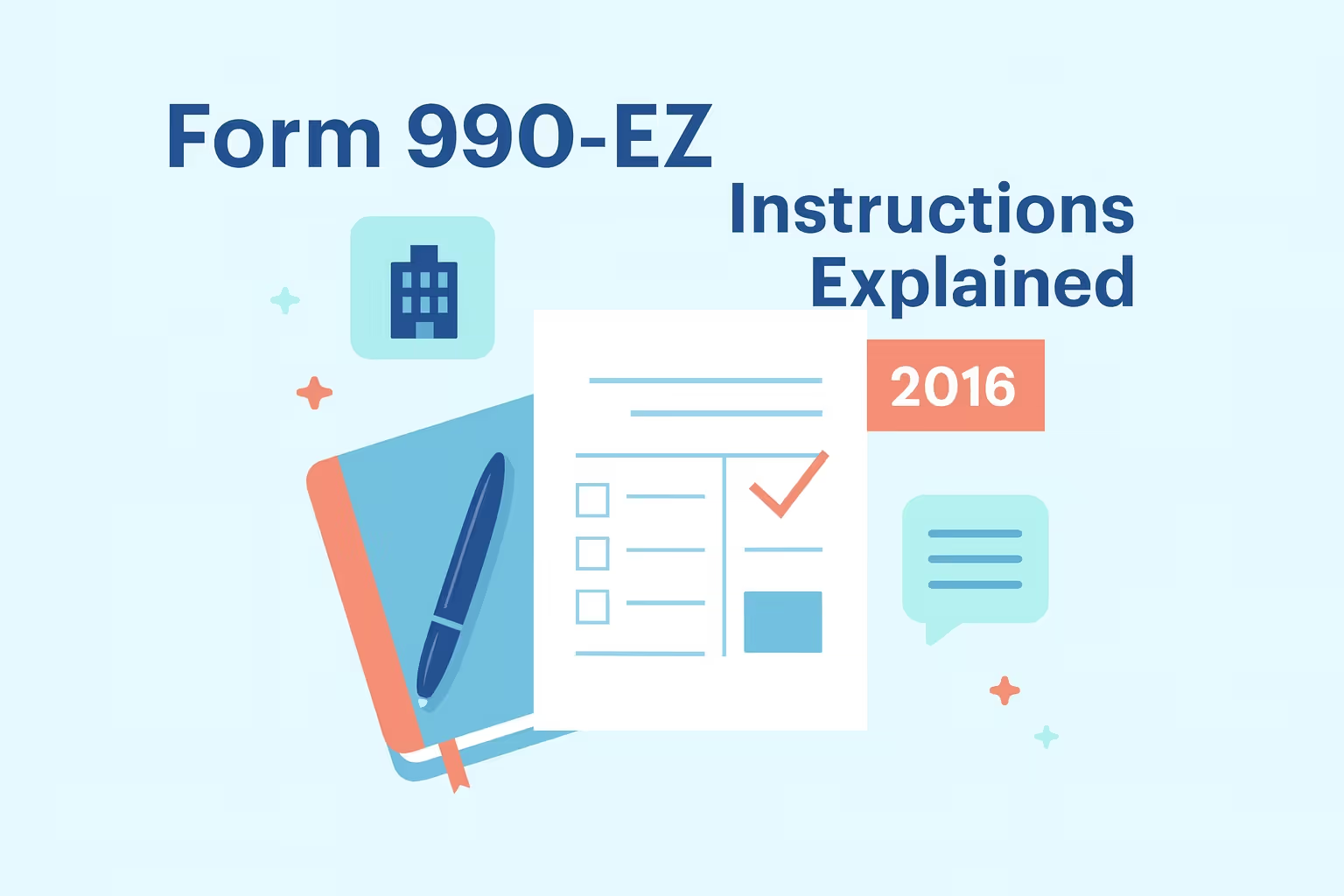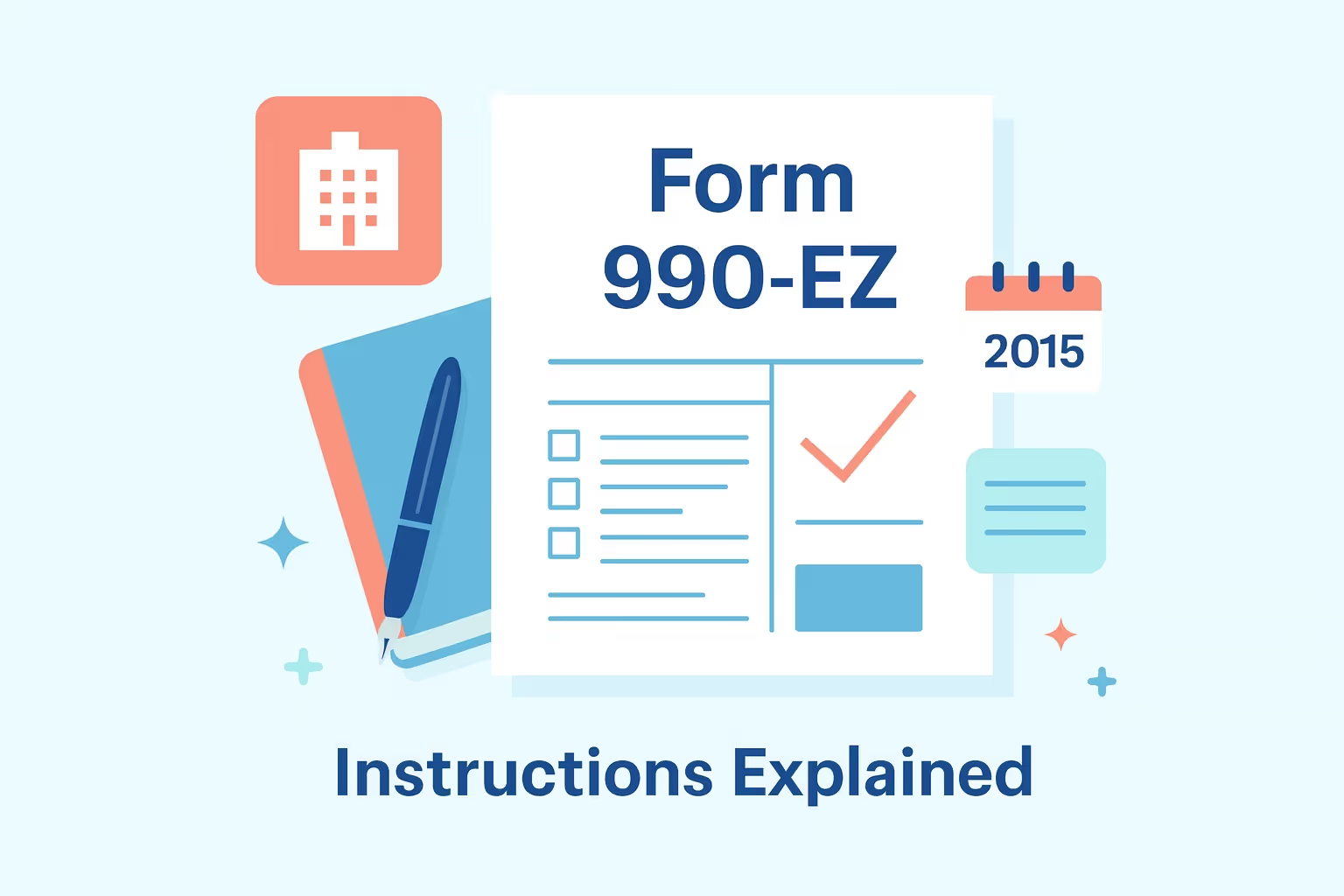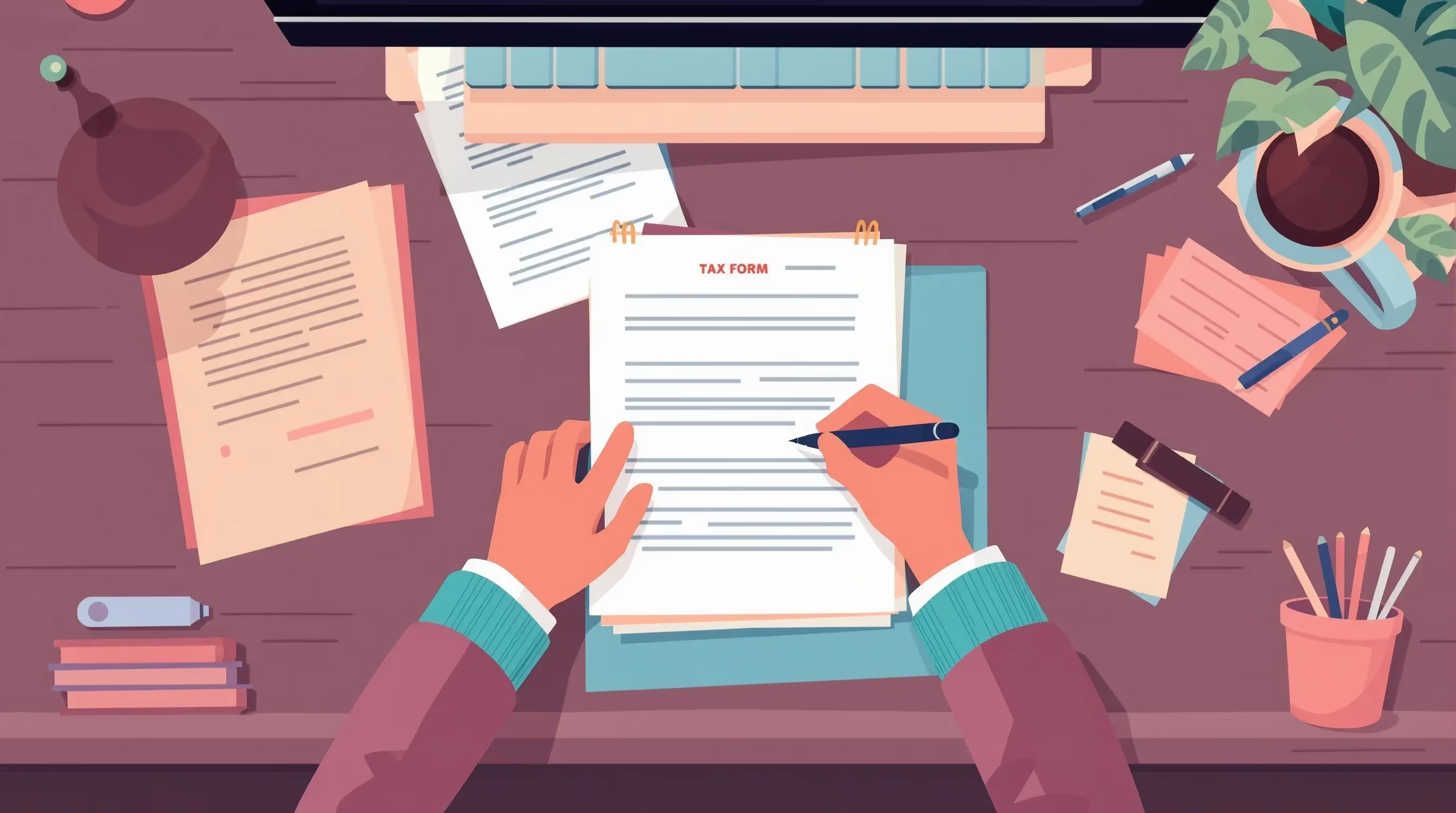
What IRS Form 990-EZ Is For
IRS Form 990-EZ (2018) is a simplified tax return used by smaller tax-exempt organizations to report their financial activities to the IRS. This form applies to organizations with gross receipts of less than $200,000 and total assets under $500,000. It allows these entities to maintain compliance with federal income tax return requirements and avoid penalties, such as the failure to file penalty and late payment penalties.
Form 990-EZ provides a streamlined way for smaller organizations to disclose their income, expenses, and other relevant financial details. Timely filing ensures that organizations remain in good standing with the IRS and avoid unnecessary interest charges or accruing tax debt. Filing this form on time helps prevent penalties and ensures continued compliance with IRS regulations.
When You’d Use IRS Form 990-EZ
IRS Form 990-EZ is used by tax-exempt organizations with gross receipts under $200,000 and total assets under $500,000. These organizations must file the form annually to comply with IRS regulations. If an organization is filing taxes late, it must still submit the form to avoid accumulating penalties and interest charges.
Filing after the due date leads to late payment penalties, which are compounded daily and increase the amount owed. To prevent these penalties, organizations should file as soon as possible, even if it's late. Filing Form 990-EZ helps avoid failure-to-file penalties and ensures compliance with IRS rules.
Key Rules or Details for 2018
IRS Form 990-EZ for 2018 includes several important rules and updates that organizations must follow. Here are some key details to remember when filing:
- Schedule B no longer requires specific organizations to disclose contributor names unless they are 501(c)(3) or section 527 organizations.
- The failure to file penalty increases based on how many days the return is overdue, with a maximum of 25 days and a minimum penalty.
- Organizations with tax owed over $200,000 must file Form 990 instead of Form 990-EZ.
- The IRS charges interest on unpaid taxes, and interest rates are compounded daily.
- Filing late can result in interest charges that accrue for a partial month or even up to five months, depending on the filing delay.
- If filing after the due date, organizations should consider payment options to pay their tax and avoid further IRS penalties.
Understanding these key rules helps organizations avoid penalties and maintain compliance with IRS guidelines.
Step-by-Step (High Level)
Filing IRS Form 990-EZ involves several essential steps to ensure compliance and avoid penalties. Follow these steps to complete the form accurately and on time.
Step 1: Gather Necessary Documents
Begin by collecting your organization’s financial records, such as income statements, balance sheets, and previous tax returns required. You will also need supporting documents for schedules like Schedule A, Schedule B, and Schedule O, if applicable.
Step 2: Complete the Form
Carefully complete all sections of IRS Form 990-EZ, making sure to report all income and expenses correctly. Ensure that all relevant schedules are attached to the form to avoid failure-to-file penalties.
Step 3: Submit the Form
Once completed, mail the form to the IRS by the due date. Pay any tax owed to avoid late payment penalties and interest charges. Filing on time and accurately helps maintain your organization’s good standing with the IRS.
Common Mistakes and How to Avoid Them
Filing IRS Form 990-EZ may result in common errors that lead to costly mistakes. Here are the most common errors and how to avoid them:
- Incomplete Forms: Ensure that all required schedules, such as Schedule B and Schedule O, are attached. Missing schedules may result in failure-to-file penalties.
- Late Payment or Underreporting Tax Owed: Filing late or failing to report the full amount owed leads to late payment penalties and interest charges. Always pay your tax by the due date to avoid these issues.
- Claiming Incorrect Tax Refunds or Missing the Filing Deadline: Failing to file within the same month or incorrectly claiming tax refunds can delay processing. Make sure your tax returns are filed on time and are entirely accurate.
What Happens After You File
Once IRS Form 990-EZ is filed, the IRS will process the return and may send an acknowledgment of receipt. If the form is accurate, you will not hear from the IRS unless there are issues. If discrepancies are found, the IRS will send a notice requesting additional information. If your organization owes taxes, the IRS may provide payment options to settle the balance.
Your organization may need to make estimated tax payments if additional amounts are owed. If taxes are fully paid, the IRS will update its records, and you will remain compliant with income tax requirements. Filing on time helps avoid additional interest charges.
FAQs
How can I avoid penalties when filing IRS Form 990-EZ late?
To avoid penalties, file IRS Form 990-EZ by the due date, usually April 15, or the applicable date for your organization’s fiscal year. If filing late, submit it as soon as possible to minimize late payment penalties and failure-to-file penalties. Penalty relief may be available if there’s reasonable cause for the delay.
What happens if I owe taxes after filing Form 990-EZ?
If your organization owes taxes, you may face a failure to pay penalty and interest charges. The IRS will issue a tax bill that includes additional fees. Payment plans and options like money order or cash can settle the balance.
Can I get penalty relief if my organization files late?
You may qualify for penalty relief if the delay is due to reasonable cause and not willful neglect. Provide documentation to prove the delay was beyond your control when requesting relief from the IRS.
What is the maximum penalty for filing Form 990-EZ late?
The failure to file penalty is based on the days late and the organization’s size. The maximum penalty varies, typically depending on the delay length and tax year. Filing late for five months increases penalties and interest charges significantly.
Can I track the status of my filed Form 990-EZ?
Once filed, check your filing status on the IRS page last reviewed for updates. If needed, the IRS will send a notice. Ensure your taxpayer information is up-to-date and secured with the locked padlock icon when submitting online.
For additional guidance on prior-year filings and related nonprofit IRS documents, visit our Federal Form Summaries and Guides Library.






